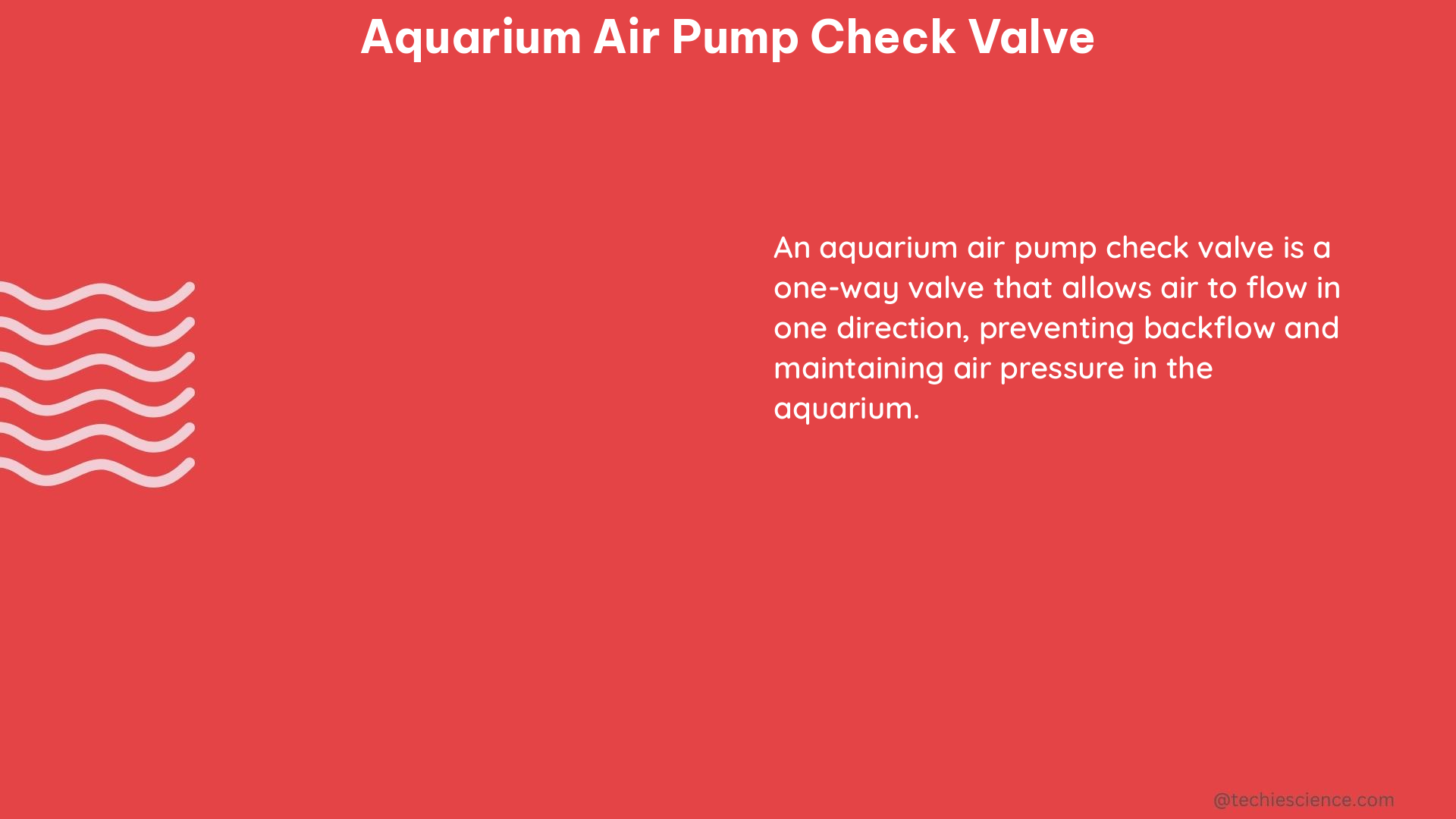The aquarium air pump check valve is a crucial component in maintaining a healthy aquatic environment. It prevents water from flowing back into the air pump, thus protecting the pump from damage and preventing floods around the tank. The check valve works by allowing air to flow from the pump to the connected device(s) but not allowing air or water to flow back towards the pump.
Understanding the Importance of Aquarium Air Pump Check Valves
Aquarium air pumps are essential for providing oxygen to the water, powering air-driven equipment, and maintaining a healthy environment for aquatic life. However, without a properly functioning check valve, water can be siphoned back into the air pump, leading to potential damage and even flooding. The check valve acts as a one-way gate, ensuring that air flows in the correct direction and preventing any backflow.
Choosing the Right Aquarium Air Pump Check Valve

When selecting an aquarium air pump check valve, there are several factors to consider:
Material
- Plastic and Rubber: These are the most common materials used for aquarium check valves. They are affordable, durable, and corrosion-resistant.
- Stainless Steel and Bronze: While these materials are more durable, they are not suitable for saltwater aquariums as they can corrode over time.
- Kynar: Kynar check valves are specifically designed for use in aquariums where ozone is being pumped, as ozone can melt other plastic materials.
Size
- The check valve must fit the diameter of the air tubing used in your aquarium. Standard aquarium air tubing is typically 3/16 inch (5mm) in diameter.
Resistance and Flow Rate
- The resistance of the check valve is an important factor, as it can affect the overall airflow in your aquarium. The Pentair AES aquarium check valve, for example, has a resistance of only 3″ H2O at 0.07 cfm.
- To measure the flow rate of your air pump, you can place the pump in a tank of water and use an upside-down measuring cup to collect the bubbles over a known period of time. Divide the volume by the time to get the flow rate.
Debate: Are Aquarium Check Valves Necessary?
There is some debate among aquarium enthusiasts regarding the necessity of check valves. Some argue that they provide peace of mind and prevent potential issues, while others claim that check valves can eventually leak and are not entirely dependable.
As an alternative to using a check valve, you can ensure that the air pump is installed above the tank’s waterline. This way, even if water is siphoned through the air tubing, it will not be able to back up higher than the height of the tank.
Quantifiable Data on Aquarium Air Pump Check Valves
Here are some measurable and quantifiable data points on aquarium air pump check valves:
| Metric | Value |
|---|---|
| Resistance of Pentair AES Check Valve at 0.07 cfm | 3″ H2O |
| Airflow Dependency on Depth | – 4 L/min when not submersed – Flow stops at 161 cm (0.016 MPa) depth – 2 L/min at 80 cm depth |
Additionally, the flow rate of an air pump can be measured by placing the pump in a tank of water, covering the output with an upside-down measuring cup filled with water, and then turning the pump on for a known period of time. The volume of bubbles collected can be divided by the time to calculate the flow rate.
Conclusion
The aquarium air pump check valve is a vital component in maintaining a healthy aquatic environment. By understanding the importance of check valves, the factors to consider when choosing one, and the available quantifiable data, you can make an informed decision to ensure the long-term success of your aquarium.
References:
– Help me understand airline check valves
– Check Valve Aquarium
– Aquarium Check Valve
– Check Valves: Did I do it right?
– Is there a relatively inexpensive way to measure air pump flow rate?
